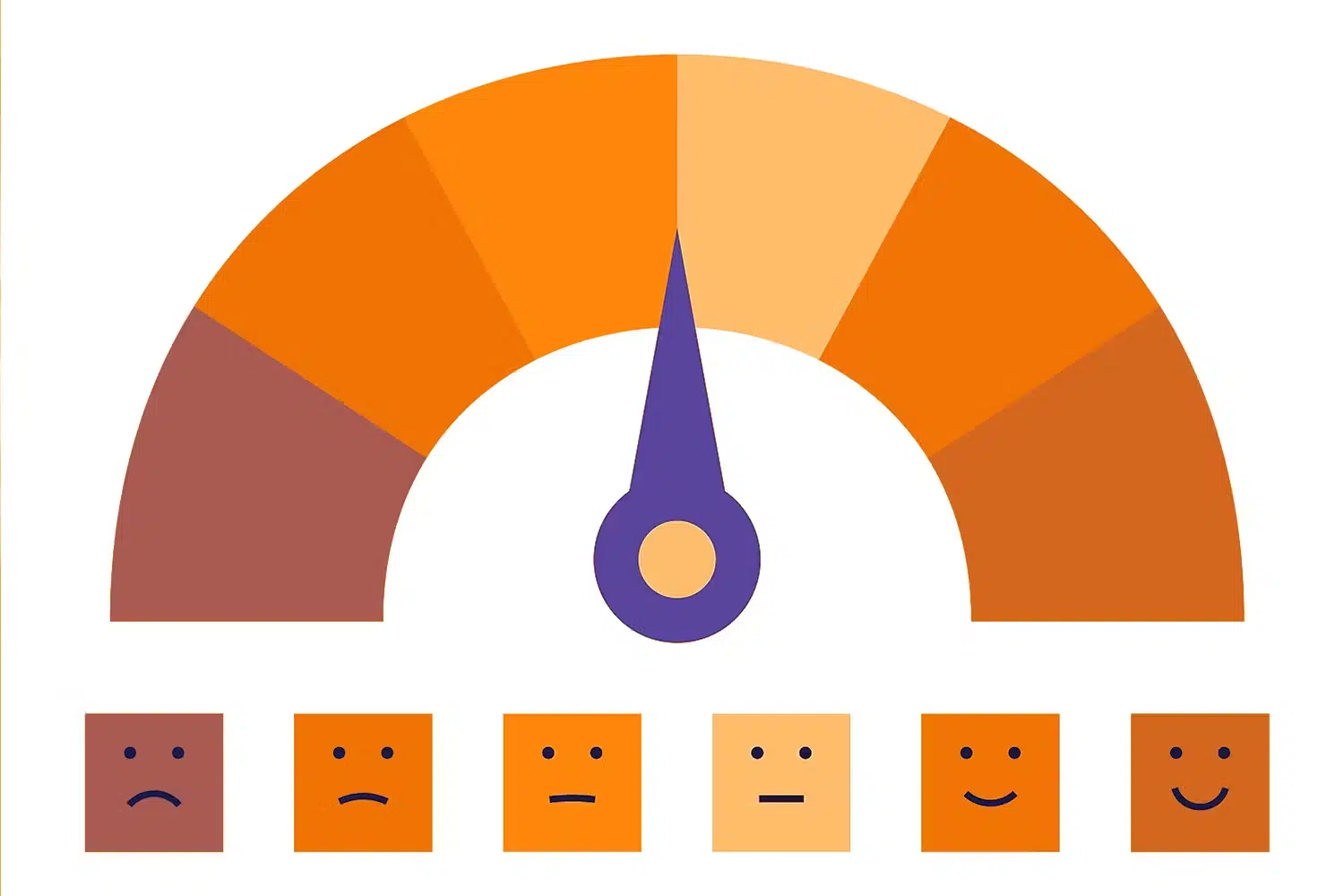
What’s the Difference? FICO and Credit Scores

Anytime you apply for a form of credit— whether it be a store credit card, a home mortgage, or anything in between— your credit score will be checked. Your credit score is a number designed to be an indicator of creditworthiness and helps lenders understand the risk they take when they lend you money.
You may have also heard this go by a different term: FICO score. Though they are often used interchangeably, credit scores and FICO scores are not exactly the same. In this article, we’ll break down the difference between the two and what you need to know about how your FICO score is calculated.
Looking for tips on managing your credit and finances?
Take a look at some of our other articles.
Understanding the Difference Between FICO and Credit Score
A credit score is a general term used to describe a three-digit number that indicates how creditworthy you are. It is calculated based on information contained in your credit report.
But not all credit scores are the same. That’s because there are various companies that create credit scores using their own unique scoring model. You may have heard of some of these scoring models before— names like VantageScore, TransRisk, and, of course, FICO.
This means that every FICO score is a credit score, but not every credit score is FICO. It’s like how every Kleenex is a tissue, but not every tissue is a Kleenex brand.
History of FICO
FICO, which originally stood for Fair, Isaac, and Company, was a data analytics company that developed the industry-standard credit scoring method in 1989.
Before the model was introduced, there was no universally accepted method of credit evaluation. Credit card companies and lenders could accept or deny applicants on subjective factors including demographics like age, sex, and where you lived. The FICO system brought fact-based data evaluation and consistency to lending.
How FICO Works Today
Today, FICO is used by 90% of the top lenders in the country. Whenever you apply for a credit card or loan, the credit card company or lender is most likely looking at a FICO score.
It’s important to note that the formula FICO uses isn’t exactly the same as it was back in 1989. FICO periodically updates their algorithm to reflect changes in data reporting, lender requirements, and how consumers use credit. Updated scoring models ensure that lenders will have the most accurate picture of your creditworthiness.
In addition to their base scoring model, FICO also has industry specific models— Auto Score and Bankcard Score. The FICO Auto Score is commonly used in auto lending while the Bankcard Score is used in credit card decisioning. Like the base FICO scores, these two models get updated periodically.
Keep in mind that not all lenders and companies are quick to adopt the latest models. This means that your score can be slightly different based on the specific model that is used.
To learn more about the differences between the various FICO score versions, visit FICO’s webpage on the topic.
How FICO Scores Are Calculated
Though FICO has more than ten unique scoring models, all of them are based on your data in five main categories:
| Factor | Weight | What’s Included |
|---|---|---|
| Payment History | 35% | The factors that make up your payment history include:Payment informationThe number of past due itemsHow delinquent your payments are now or have been in the pastWhat you owe on delinquent accounts or collectionsAdverse public records like bankruptcies and how long it’s been since those were introducedHow many accounts are being paid on timeIn short, this portion of your credit score lets lenders know whether or not you pay your credit account bills on time. |
| Amounts Owed | 30% | This category looks at:How many accounts have balancesHow much you owe on each accountHow much you owe on types of accounts (credit cards vs. installment loans)Your credit utilization ratio (the amount of debt you owe compared to the total amount of credit you have access to)How much you still owe on loans compared to the amount borrowedWhile having balances on credit cards or loans isn’t necessarily a bad thing, having too much debt or having maxed out credit cards can be a red flag for lenders. |
| Length of Credit History | 15% | Here, FICO will look at:How long you’ve had each accountThe age of your oldest account, newest account, and the average age of all of your accountsWhen you last used your credit accountsIn general, the longer your credit history, the better your score will be. |
| New Credit | 10% | Taking out several loans or lines of credit at once can indicate that you are having financial difficulties or will have trouble making payments for another card or loan. This is why FICO considers new credit factors like:How many recent credit report hard inquiries you’ve hadHow many new accounts you haveHow long it has been since you’ve opened a new accountAccounts opened in the past 12 months are considered in this category. |
| Credit Mix | 10% | In this category, the FICO scoring model considers what kinds of credit accounts you’ve had.Though it doesn’t account for a large portion of the score, lenders like to see that you have experience managing both installment credit accounts (mortgages, auto loans, student loans, etc.) as well as revolving lines of credit (credit cards, retail store cards, etc.) |
How to Check Your FICO Score
There are a ton of online resources, apps, and financial tools that offer access to your credit score. Some popular companies that offer these services include Mint, Credit Karma, and Credit Sesame. However, these numbers are often generated using different models and may not even be close to what your actual FICO score is.
Because so many lenders and credit companies use FICO, relying on these other numbers to estimate your credit score can leave you caught off guard. You may go into a lending office with the idea that you have an excellent credit score, when in reality your score is classified as good or fair.
To ensure that you have an up-to-date FICO score, obtain it from an authorized retailer listed on this website.
Other FICO Score FAQs
Here are some answers to commonly asked questions related to FICO scores.
1. What does FICO Score 8 mean?
FICO Score 8 is a particular scoring model developed by FICO. It was introduced in 2009 and is one of the most commonly used models.
2. Which FICO score do mortgage lenders use?
FICO Score 8 is one of the most common models that mortgage lenders use. However, this can vary. Always be sure to check with your particular lender to get the specifics.
3. Why is my FICO score lower than my credit score?
If you’ve received your credit score from another source, they are likely using a different scoring model. Because they take different factors into consideration and place different weights on these factors, another credit score can be different from your FICO score even if they are pulling the information from the same credit report.
4. Is income a factor in FICO scores?
No, FICO does not consider income when determining your score.
5. What is a good FICO score?
FICO has assigned the following ratings to scores:
- Poor: <580
- Fair: 580-669
- Good: 670-739
- Very good: 740-799
- Exceptional: 800+
Understanding FICO
Understanding your FICO score can help you better understand your overall financial health. Since it’s what most lenders and credit card companies use when approving your application, knowing your FICO score can help you determine whether you’d be likely to qualify for credit. If your score isn’t quite where it needs to be, check out our guide to raising your credit score. Improving your score before applying for a loan or credit card can increase your chances of qualifying. It does take time to increase your score; there’s no better time to start than today!
Build Your Credit With an Amplify Card
From a secured credit card to an introductory 0% APR credit card offer, we have a credit card to fit every credit score.

